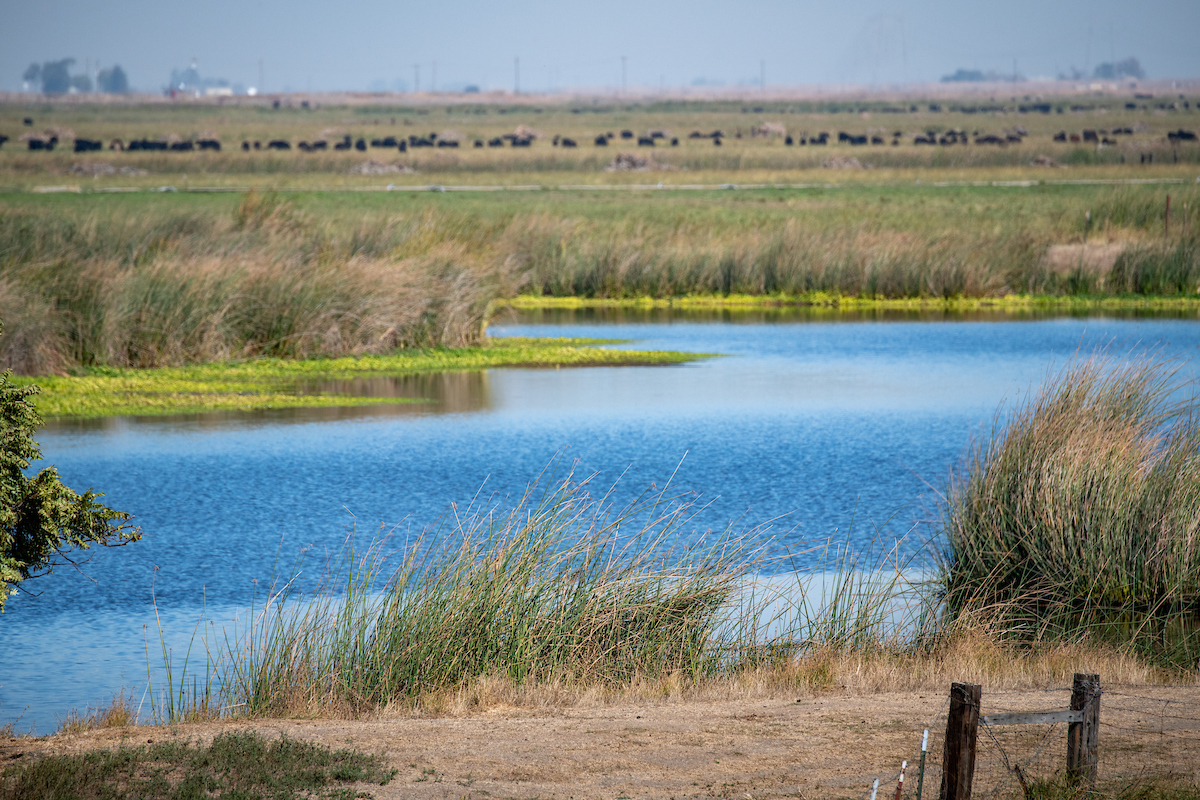Written by John Brennan
 Late in 2015 two sisters contacted me to help sell their family farm property in Solano County next to the Sacramento-San Joaquin Delta. They had decided it was time.
Late in 2015 two sisters contacted me to help sell their family farm property in Solano County next to the Sacramento-San Joaquin Delta. They had decided it was time.
The property is marginal pastureland that was marshland until levees were constructed around 100 years ago and the land was “reclaimed”. It is located within the thin band that surround the Delta at the perfect elevation to be flooded by the daily pulse of the tides making it ideal for conversion back to intertidal wetland habitat. Creation of this category of habitat has been called for in every plan written for the Delta over the past 50 years.
The location of this property is adjacent to the southern end of the Yolo Bypass, a 60,000-acre floodplain that steers flood flows away from the Sacramento River and the capital in big storms. If the project is constructed, it will become the southerly anchor of what could eventually be a continuous edge of ten miles of intertidal wetland habitat supported by the seasonal floodplain to feed the Delta estuary; this is exactly what the Delta needs.
Luckily, a conservation project builder (Ecosystem Investment Partners) was interested pursuing the task of pulling together this project and getting it built. When the sister’s property would not work on its own, they were able to convince the neighboring landowner to add their property to the project, creating the largest potential restoration project in Delta history, some 3,400 acres costing more than $100 million (the Delta’s two large water export facilities paying most of the tab).
Now, six years and some 36 permits later, the project, Lookout Slough which has been deemed the “model multi-benefit project” by conservation groups and flood control advocates alike, faces its final regulatory hurdle – the Delta Stewardship Council. The Council was created by the Legislature in 2009 in part to advance restoration. Yet the Council, in its review of Lookout Slough for consistency with the Delta Plan, is on the verge of saying no, saying that some of the science behind the proposal simply is not good enough.
The hang-up is about recreation. At the moment, the land is bordered to the east by a levee. Fishermen use the road atop it to access the adjacent slough. At the southern end of the road is an unmaintained county bridge that once reached Liberty Island, which flooded in 1997. Some kayakers use this span, known as The Bridge to Nowhere, to launch treks to Liberty Island for sight-seeing and hunting.
For Lookout Slough to take floodwaters off the bypass, the levee must be breached so water – and fish – can pass onto the “new” tidal wetlands. Breaching the levee means taking out the access road to the abandoned bridge. After working through over twenty iterations of the project with both the flood control and habitat interests, the decision was made that physical solutions to maintain access on the road – culverts or new bridges – aren’t workable for restoration or engineering reasons.
The Council staff, in its recent and tentative determination, says that they failed to use “best available science” to estimate recreation levels in the area, proposing to toss the project back for a new look at the issue.
I assume Lookout Slough will eventually be approved by the Delta Stewardship Council, but I am not sure it gets built. A decision to deny the project and require more study in order to get the 37th permit would send a terrible signal. It would tell anyone who believes in and advocates for restoration, like myself, that the process of getting permission has become so convoluted, so broken, that even the best efforts in the best locations are doomed to unmanageable costs and delays.
The seven-member Council has the final say at hearings on July 15 and 16.
We do need to do a better job maximizing recreational opportunities on public lands in the Delta. But this isn’t the way. The Council is insisting on some mythical perfect solution to an already near perfect project. And that threatens to make habitat restoration an endangered species, making the Council a danger to the Delta itself.
John Brennan is a land manager and conservationist located in Woodland, California, and has been active in conservation efforts within the Yolo Bypass for the past 20 years.
View/download draft determination below. More documents available here.
Proposed Determination C20215 Lookout SloughPrevious coverage on Maven’s Notebook …
DELTA COUNCIL: Consistency Determination for Lookout Slough Project appealed



